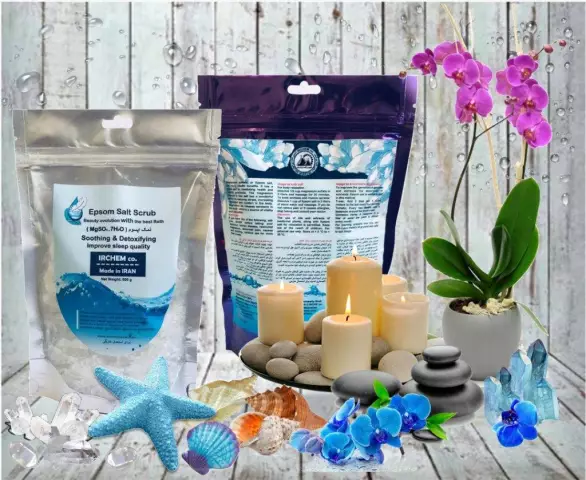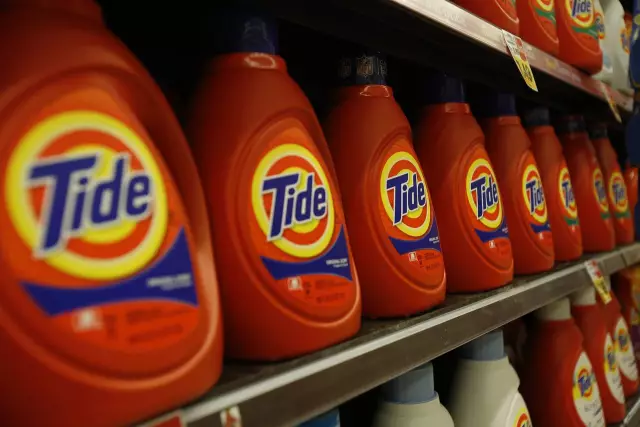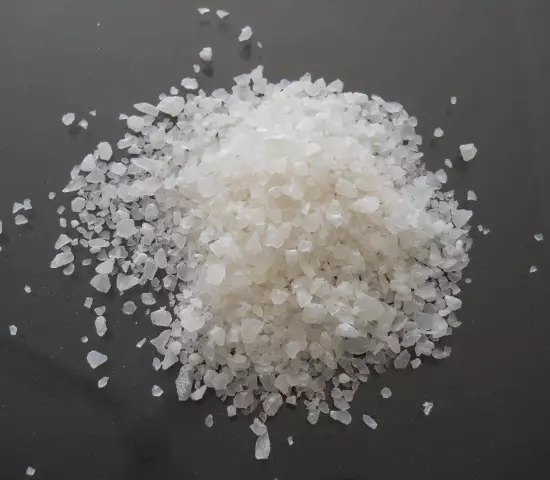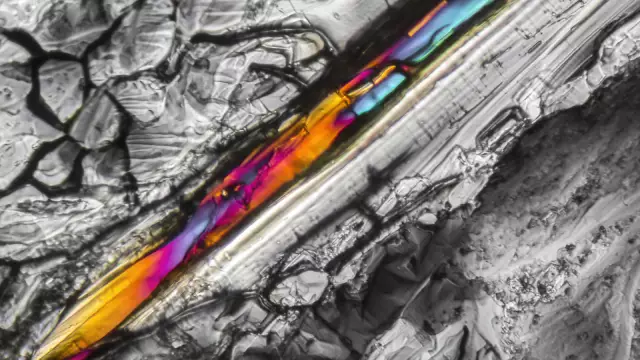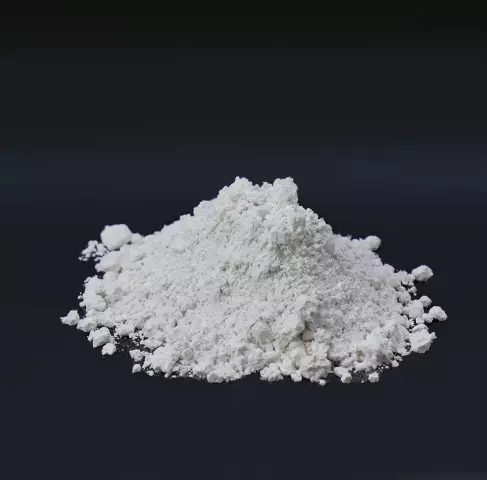- Author Rachel Wainwright [email protected].
- Public 2023-12-15 07:39.
- Last modified 2025-11-02 20:14.
Protamine sulfate
Protamine sulfate: instructions for use and reviews
- 1. Release form and composition
- 2. Pharmacological properties
- 3. Indications for use
- 4. Contraindications
- 5. Method of application and dosage
- 6. Side effects
- 7. Overdose
- 8. Special instructions
- 9. Application during pregnancy and lactation
- 10. Use in childhood
- 11. Drug interactions
- 12. Analogs
- 13. Terms and conditions of storage
- 14. Terms of dispensing from pharmacies
- 15. Reviews
- 16. Price in pharmacies
Latin name: Protamine sulfate
ATX code: V03AB14
Active ingredient: protamine sulfate
Manufacturer: Ellara Ltd. (Russia), Galenika ad. (Galenika ad) (Serbia and Montenegro)
Description and photo update: 10.07.2018
Prices in pharmacies: from 956 rubles.
Buy

Protamine sulfate is a hemostatic (hemostatic) agent, a specific heparin antagonist.
Release form and composition
The drug is produced in the following forms:
- solution for intravenous administration: colorless or with a yellow tinge transparent liquid (2 or 5 ml in ampoules; in a package made of polyvinyl chloride film or contour plastic 5 ampoules, in a cardboard box 1 or 2 packages; in a cardboard box with a corrugated insert 5 or 10 ampoules; in the absence of a point or break ring on the ampoules, a scarifier or ampoule knife is placed in the pack / box);
- solution for injection: colorless transparent liquid (5 ml in ampoules, in a cardboard box of 5 ampoules).
Composition of 1 ml solution for intravenous (IV) administration:
- active substance: protamine sulfate - 10 mg;
- additional components: water for injection.
Composition of 1 ml solution for injection:
- active substance: protamine sulfate - 10 mg;
- additional components: sulfate acid, phenol, sodium chloride, water for injection.
Pharmacological properties
Pharmacodynamics
Protamine sulfate is an antidote to heparin, a hemostatic drug. The active substance of the drug in a dose of 1 mg neutralizes 80-120 units of action (U) of heparin in the blood. With intravenous administration, the formation of the protamine-heparin complex is associated with the presence of a large number of cationic groups (due to arginine), which link with the anionic centers of heparin. The resulting protamine-heparin complex can be destroyed with concomitant release of heparin. After intravenous injection, the effect occurs instantly and lasts for 2 hours.
Pharmacokinetics
The pharmacokinetics of the active substance have not been studied.
Indications for use
- bleeding due to an overdose of heparin;
- hyperheparinemia;
- the period after surgery on the heart and blood vessels using artificial circulation;
- the period before surgery in patients taking heparin for therapeutic purposes.
Contraindications
- idiopathic / congenital hyperheparinemia (due to a possible increase in bleeding, due to the lack of effectiveness of the hemostatic agent);
- hypersensitivity to the components of the drug.
Additional contraindications for solution for intravenous administration:
- thrombocytopenia;
- severe arterial hypotension;
- insufficiency of the adrenal cortex;
- taking other drugs that include protamine sulfate (including insulin);
- history of allergic reactions to fish.
Instructions for the use of Protamine sulfate: method and dosage
Protamine sulfate is injected slowly in / in a jet or drip.
The maximum rate of administration is 5 mg per minute, for example, a dose of 50 mg should be administered for at least 10 minutes, since a faster administration can lead to the development of an anaphylactoid reaction. The established dose of the solution for intravenous administration must be diluted in 300-500 ml of 0.9% sodium chloride solution.
The maximum dose of the drug administered within 1 hour should not exceed 150 mg. The dose of solution for intravenous administration and solution for injection is determined depending on the method of administration of heparin.
When carrying out bolus injections of heparin, the dose of protamine sulfate is reduced taking into account the time elapsed after the administration of heparin, since the latter is continuously excreted from the body.
The recommended dose of the drug [per 100 International Units (IU) of heparin], depending on the interval between the bolus injection of heparin and the administration of protamine:
- 15-30 minutes - 1-1.5 mg;
- 30-60 minutes - 0.5-0.75 mg;
- more than 120 minutes - 0.25-0.375 mg.
In the case when heparin is injected intravenously, it is required to stop its infusion and inject protamine at a dose of 25-30 mg.
When carrying out subcutaneous (s / c) injections of heparin, the drug is prescribed in a dose of 1-1.5 mg for every 100 IU of heparin. It is recommended that an initial dose of 25-50 mg be injected intravenously slowly, and the remainder - intravenously drip over 8-16 hours. Also, fractional introduction of protamine sulfate is allowed when monitoring activated partial thromboplastin time (APTT). For example, if 20,000 IU of heparin is administered s / c, after 2 hours the process of resorption of this agent, which is part of the complex with protamine, in the amount of 3333 IU, occurs, as a result of which the next dose of protamine sulfate should be 33 mg.
When using extracorporeal circulation against the background of surgery, the drug is prescribed at a dose of 1.5 mg for every 100 IU of heparin.
The maximum duration of therapy is 3 days.
Side effects
- cardiovascular system: arterial hypotension, bradycardia;
- immune system: rarely - itching, skin rash, urticaria, anaphylactoid reactions;
- digestive system: for solution for intravenous administration - vomiting, nausea;
- others: flushing of the skin, feeling of heat; too fast intravenous injection - a feeling of lack of air.
Overdose
In case of an overdose, a decrease in blood clotting is possible (which is fraught with bleeding) since the drug itself has anticoagulant activity. Therapy in this case is prescribed symptomatic.
special instructions
Infusion of solution for intravenous administration should be carried out under the control of blood coagulation indicators. Before starting intravenous administration, it is required to make sure that the patient's blood volume is normal (hypovolemia leads to an increased risk of collapse).
Cross-sensitivity may occur in diabetic patients who receive protamine-zinc insulin. The threat of anaphylactic reactions to protamine sulfate is aggravated in patients in this risk group.
Application during pregnancy and lactation
According to the instructions, Protamine sulfate is allowed for use during pregnancy and during lactation only if the expected benefit for the woman significantly exceeds the possible threat to the health of the fetus / child.
Pediatric use
Experience with the use of a haemostatic agent in pediatric practice is limited.
Drug interactions
When combined with Protamine sulfate, the intensity and duration of the action of non-depolarizing muscle relaxants increases.
Cephalosporins and penicillins should not be administered simultaneously with protamine, since these drugs are incompatible.
Analogs
Protamine sulfate analogs are Protamine, Protagem, Protamine-Ferein.
Terms and conditions of storage
Store in a place protected from light, out of the reach of children, at a temperature of 4-25 ° C, avoiding freezing.
Shelf life of solution for intravenous administration is 4 years, solution for injection is 3 years.
Terms of dispensing from pharmacies
Solution for intravenous administration is dispensed by prescription, solution for injection is intended for hospitals.
Reviews about Protamine sulfate
There are very few reviews of Protamine sulfate, they are almost all positive. Patients indicate the effectiveness of the drug in stopping bleeding after stroke caused by the use of heparin. The agent is well tolerated, there are no complaints about the development of adverse reactions.
Patients consider the disadvantage of the drug to be its high cost.
Price for Protamine sulfate in pharmacies
The price of Protamine sulfate solution for intravenous administration (10 mg / ml) is approximately per package: from 5 ampoules - 1150 rubles; from 10 ampoules - 1350 rubles.
Protamine sulfate: prices in online pharmacies
|
Drug name Price Pharmacy |
|
Protamine sulfate 10 mg / ml solution for intravenous administration 5 ml 5 pcs. 956 r Buy |
|
Protamine sulfate solution intravenous injection 10mg / ml 5ml amp. 5 pieces. 1042 RUB Buy |
|
Protamine sulfate 10 mg / ml solution for intravenous administration 5 ml 10 pcs. 1330 RUB Buy |

Anna Kozlova Medical journalist About the author
Education: Rostov State Medical University, specialty "General Medicine".
Information about the drug is generalized, provided for informational purposes only and does not replace the official instructions. Self-medication is hazardous to health!


